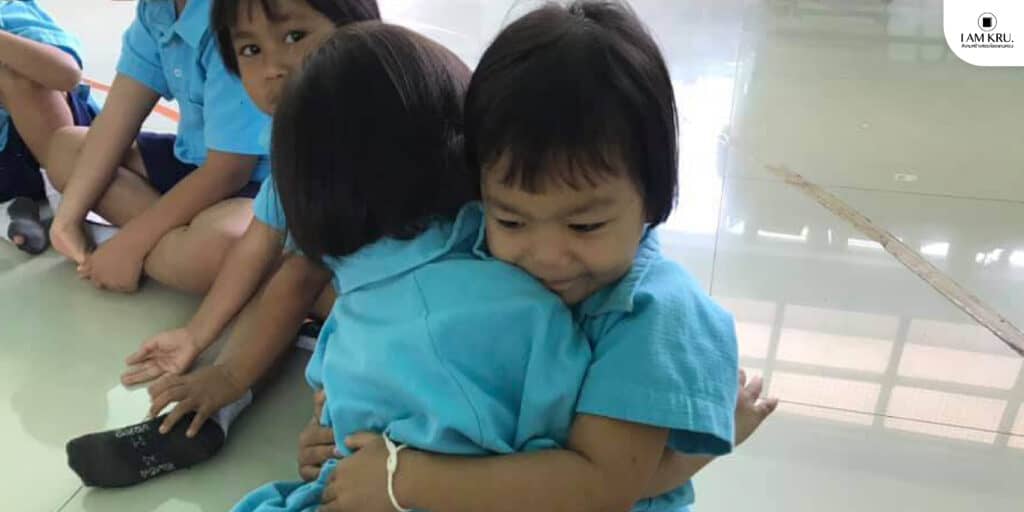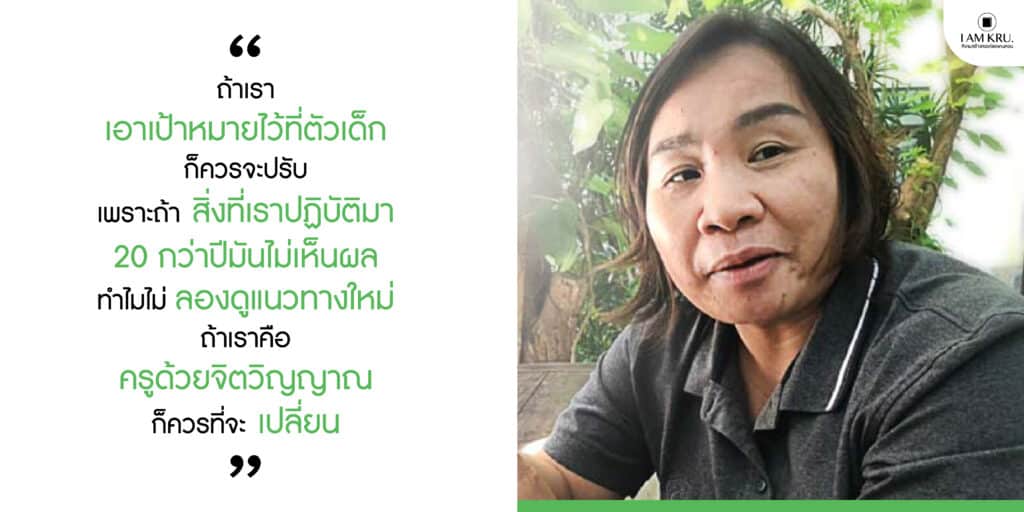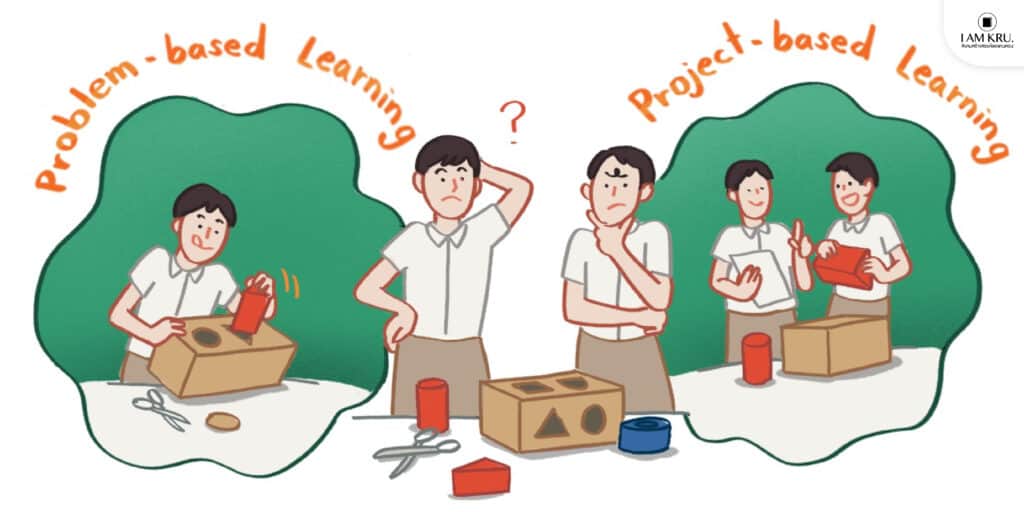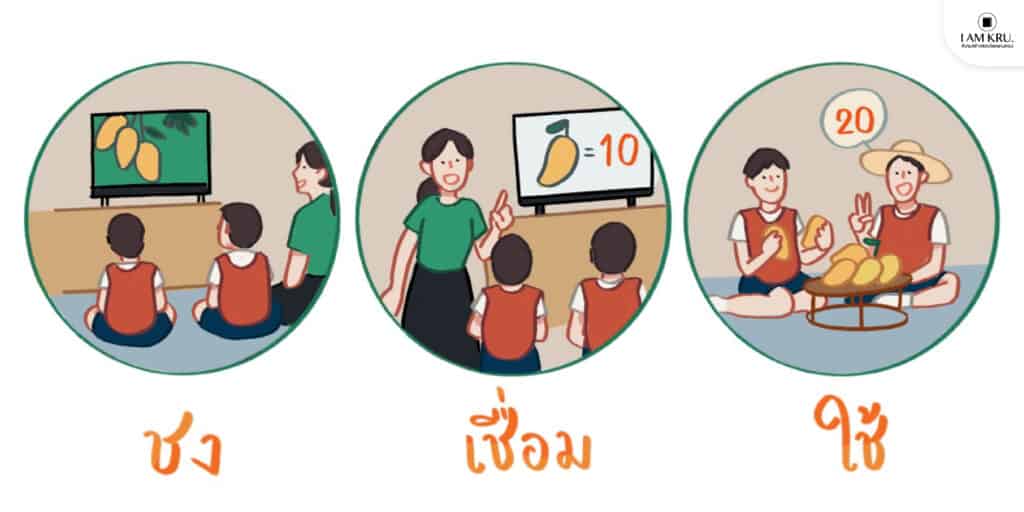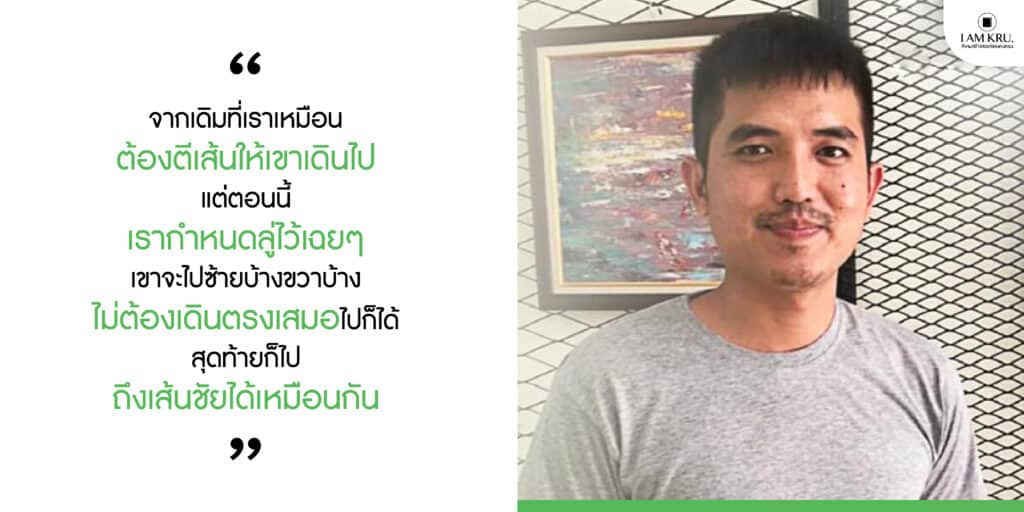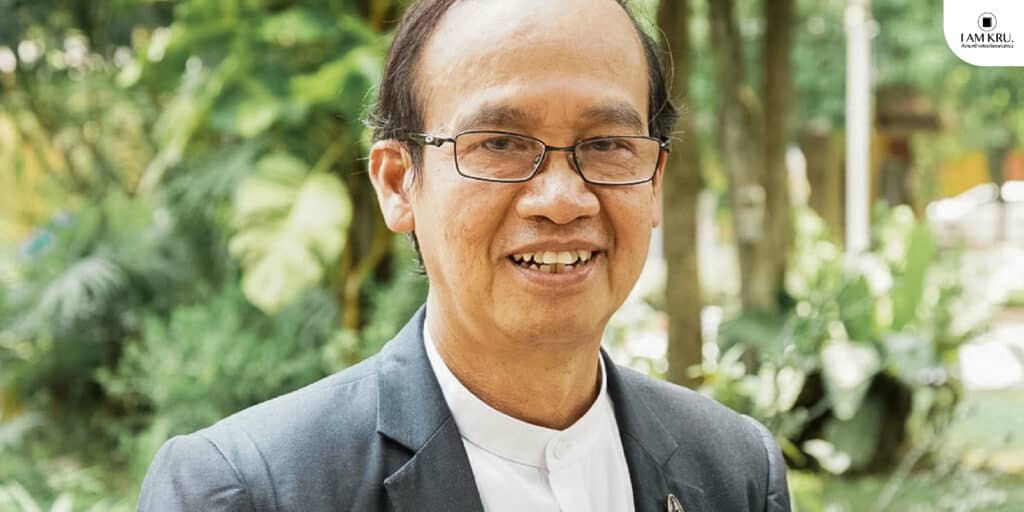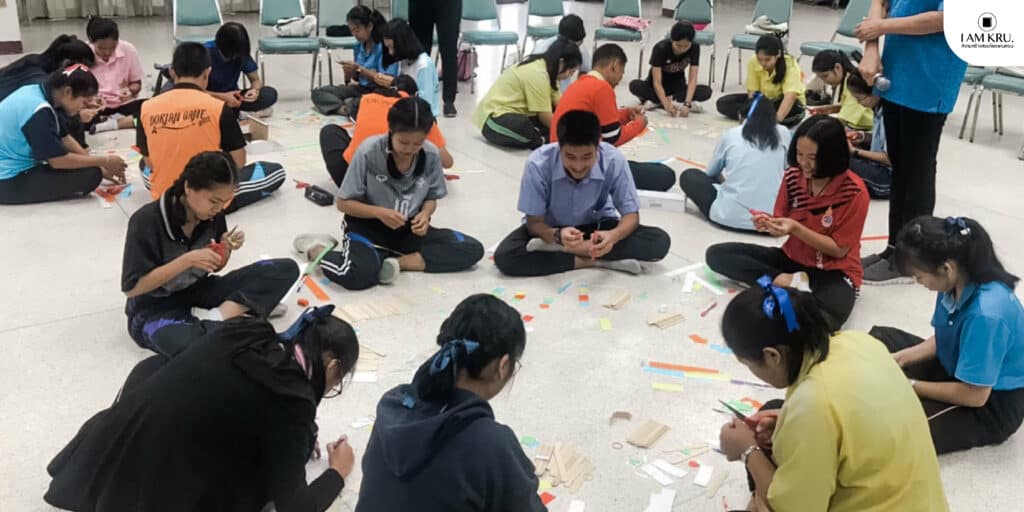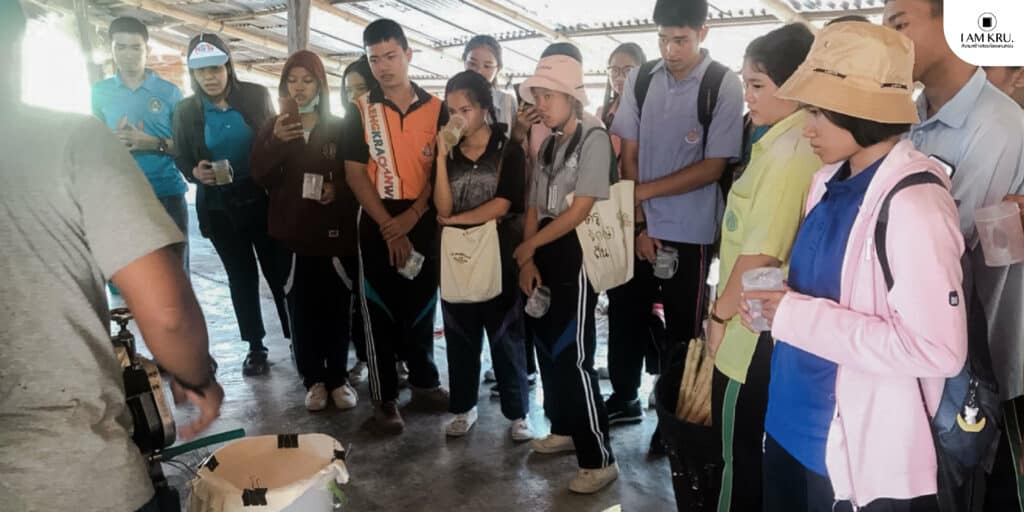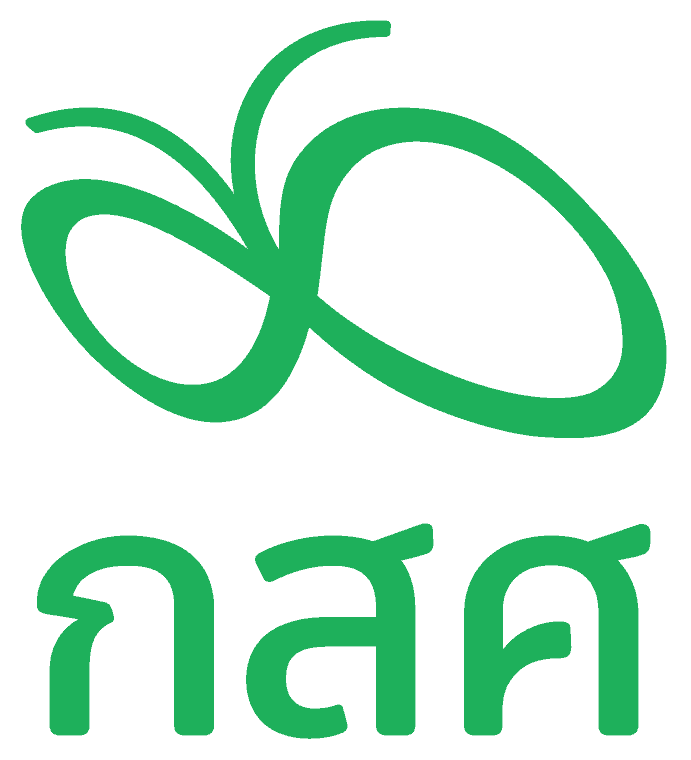A learning that concentrates on practicing problem-solving skills as opposed to memorization.
Students are familiar with learning that often requires ‘memorization’ of what is taught by teachers to serve purposes such as homework and examinations. Memorization, in fact, has failed to convey students’ actual comprehension of lessons or details.
For that reason, it leads to the development of quality education with an emphasis on ‘memorizing in conjunction with understanding’ the lessons, providing students with opportunities to refine their thinking, analyzing and solving problems by themselves. Initially, the alteration must begin with modernizing teaching and learning methods in the classroom.
Changes in education do not require large budgets or resources and it should begin with the Whole School Approach (WSA) through a model or method that is suitable to every student with the cooperation of the school personnel from the executives to teachers.
Students’ assertiveness is a result of change

“After having worked with schools in the network, what has become a noticeable change in students is their assertiveness. They are more confident as they dare to speak up, discuss and express their own reasons”
said Assoc. Prof. Dr. Maitree Inprasitha, Vice President of Education and Academic Services, Khon Kaen University as acting director of Institute for Research and Development in Teaching Profession for ASEAN Khon Kaen University (IRDTP for ASEAN KKU).
Accordingly, with the WSA mechanism supported by Teacher School Quality Program (TSQP) of Equitable Education Fund (EEF) in cooperation with the IRDTP for ASEAN KKU, the development of quality education of 60 schools in the network is a success.
Whole School Approach Mechanism
The Whole School Approach(WSA) is a strategy to alter and uplift the quality of learning in every element of the school. It offers students, teachers, school personnel and parents opportunities to become a part of the development mechanism with a model educational institute as mentor to provide suggestions.
Creative factors of the development can be divided into 6 features which are teachers’ recognition of students’ potential, student self-assessment, learning in accordance with developmental age, supervision and risk assessment of students, new teaching and learning principles, and cooperation of every person in the school. Additionally, these components affect environmental management conducive to learning, including the use of new innovations in conjunction with school development which is ‘Lesson Study’ and ‘Open Approach’ on a weekly cycle.
It commences with the integration of various subjects through different aptitudes of teachers to obtain a number of perspectives and help every teacher with ‘holistic access to students’. Subsequently, teachers will be distributed, according to different grade levels, into 3 groups; lower primary education (Grade 1 – Grade 3 teachers), upper primary education (Grade 4 – Grade 6 teachers) and lower secondary education (Grade 7 – Grade 9 teachers).
For instance, in terms of Mathematics, teachers, within a group, will design an integrated plan through math problems in the first stage of Lesson Study and students will be allowed to manage self-learning through Open Approach. In the second stage, teachers of the Lesson Study Team will join in teaching, observing, and recording the process. Lastly, they will weekly conclude the results from teachers of each group and all teachers of the school.
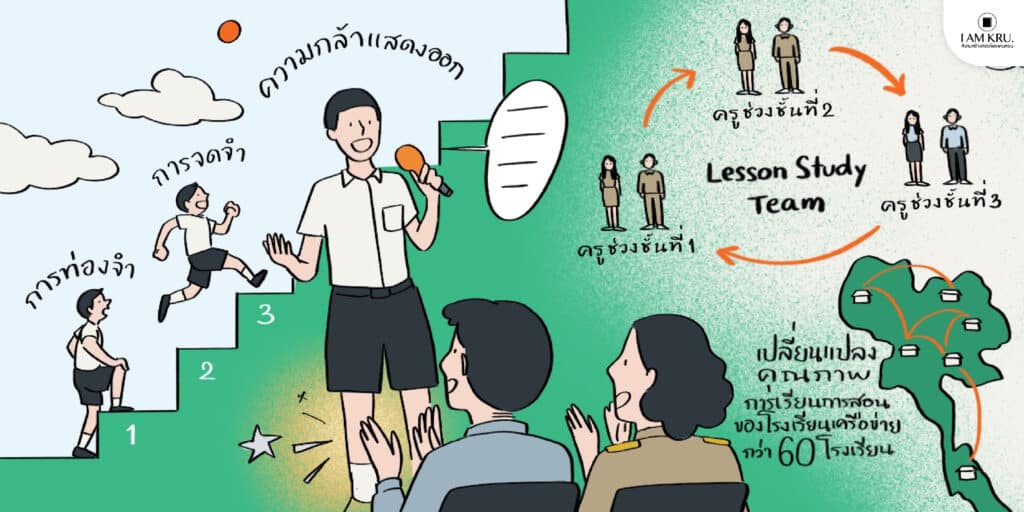
Teacher Professional Learning Community
Lesson Study is Teacher-Led Instructional Improvement that may also act as Professional Learning Community (PLC) by allowing teachers to cooperatively work with their own group in order to construct lesson plans and convert the lessons to create new teaching methods by Open Approach. It thus generates a flexible teaching and knowledge exchange in the classroom.
However, teachers should primarily anticipate students’ ideas to prepare the lessons taught in the classroom. Besides, teachers ought to constantly develop their own teaching methods to draw interests and systemically help remodel the education until it becomes an accomplishment of the school that can, in effect, lead to the development of teaching methods and learning process of primary and lower secondary students that are applicable to schools of all sizes and levels. This will apparently reduce the differences between students in the urban and remote areas.
Learning opportunities by open-ended questions
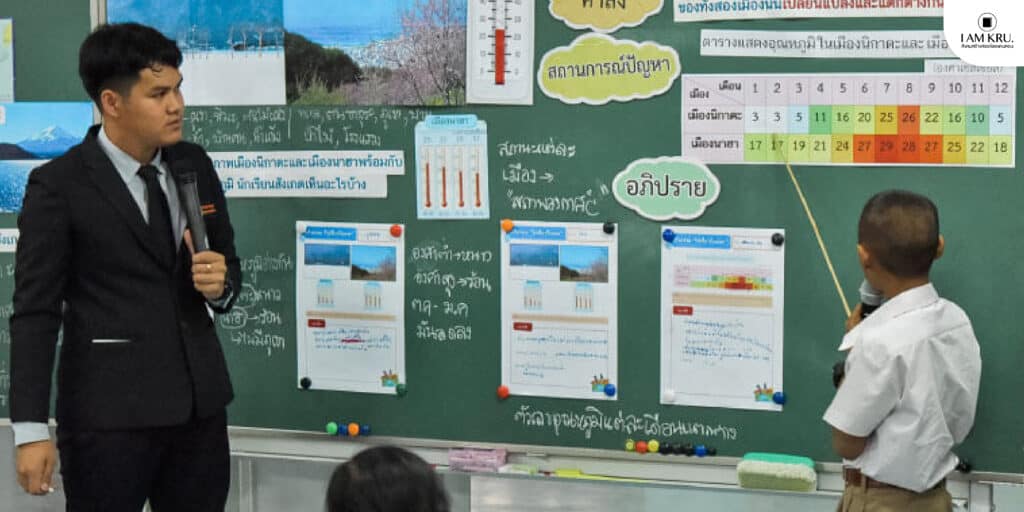
Open Approach is a learning process concerning open-ended questions posed by teachers in order that students can figure out the answers by themselves. Also, Open Approach is collectively adapted with Lesson Study to change the teachers’ role given that teachers do not only pass on knowledge or assign tasks to students, but also teachers will allow students to solve problems by themselves without guidance as teachers will opt for open-ended questions instead of lecturing and directly passing on knowledge. It can be divided into 4 processes as follow:
- Present open-ended situational questions; teachers should pose questions that are closely related to students’ surroundings and apply them in the classroom.
- Students’ self learning through solving problems by themselves
- Class discussion in which teachers will observe students’ ideas based on the method they use in solving problems
- Conclude by associating students’ ideas which depend on the teaching methods and the solutions to the problems arising in the classroom which can therefore be flexible.
Given that students can solve problems on their own, it creates more learning among themselves. Students then become confident and prepared to solve unseen problems in the future. For example, solving a problem of cutting a closed cylinder shape into the form of one sheet. Once it is solved, students will understand the surface area, volume, the relationship between two-dimensional model and three-dimensional model as well as Arts and Crafts, et cetera.
Self-study to memorize with understanding
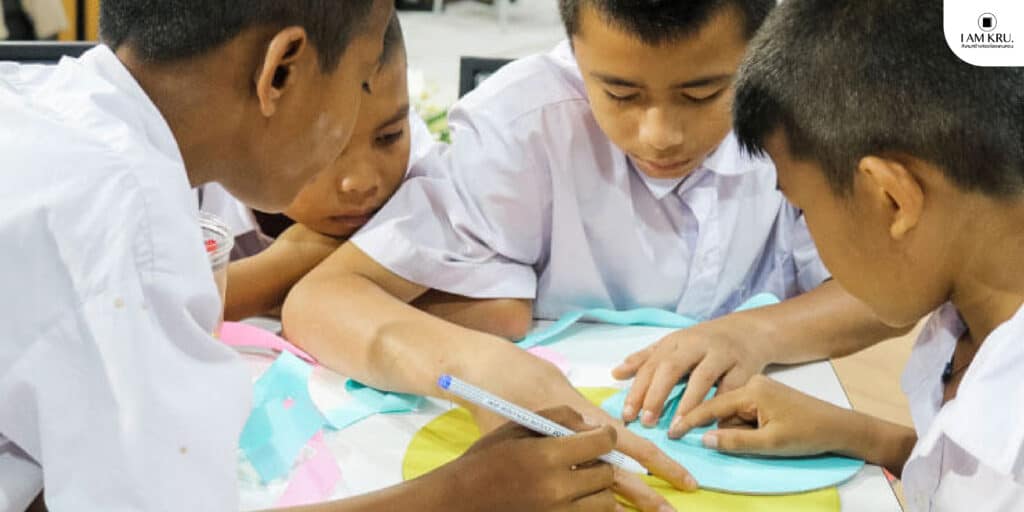
Sustainable development of educational directions should begin with teachers’ acceptance of new teaching methods and the belief in students’ self-learning that they should be allowed to study on their own to create memorization in conjunction with understanding. Ban Nonsankham Nongsala Sisa-at school and Ban Rungsomboon school, both located in Sisaket province, demonstrate a successful result of the development. By which, each school has put effort into processing and causing changes differently depending on their determination.
“IRDTP for ASEAN KKU in cooperation with 60 schools in TSQP network creates changes in many aspects. Teachers no longer work separately. They work together as opposed to being distributed by grade levels. It also generates a mutual work of the whole school by collectively designing and managing a process of learning that emphasizes problem-solving skills, resulting in the fact that students dare to think and become more assertive” stated Assoc. Prof. Dr. Maitree Inprasitha
Every student deserves equitable learning to reduce educational inequality
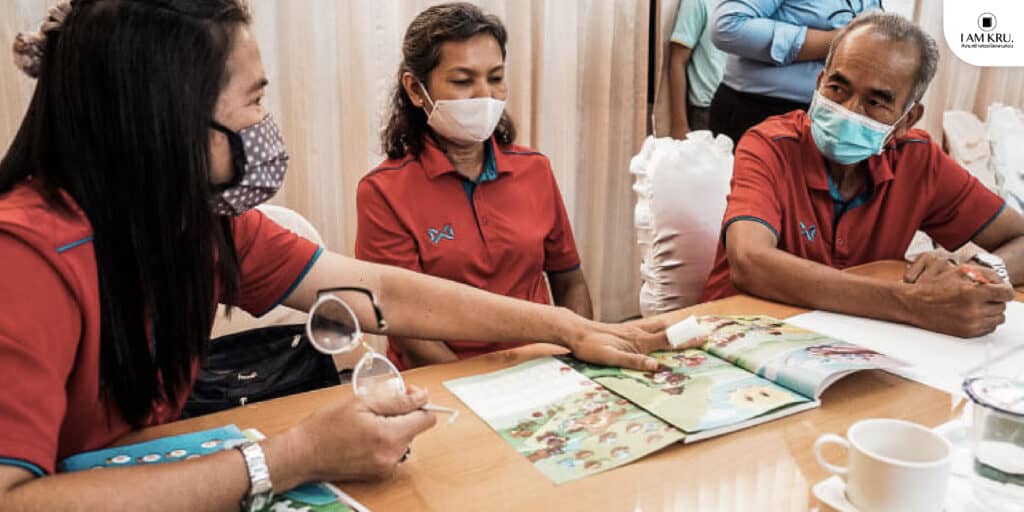
The use of new innovations as tools for teaching and learning builds a new standpoint between teachers and students. “For example, in the class where there are disabled children who may be more skilled in Mathematics than other subjects and thus do well in solving math problems, they are so thrilled that they want to go to school. There are countless cases like this. Despite the difficulty, if students have access to equitable learning, there will be equality in education. Education all around the world has developed. Memorization alone becomes obsolete. This new learning is important as it ensures that students can learn entirely and equitably.”
“If accomplished, it will become the development of quality education that helps reduce educational inequality between schools in the urban areas and schools in the countryside or remote areas. Many schools in the countryside where they used to be bottom ranked, have risen up to the top. However, time investment needs to be consistent in order to bring about successes as we have always invested in irrelevant matters.”
Network expansion for better educational development

The first year highlights each school’s recognition of the cooperative network. The first group is the schools that have begun the development since 2009, the second group since 2014, and the third group with 37 new schools added. The three groups can work towards their goals. There are 5 new work measures that have been set up which are:
- School’s goal setting
- Development of teachers and school administrators by community processes
- Organization of information systems for quality development
- Development of teaching and learning in the classroom
- Establishment of cooperative networking
The 37 newly added schools have participated in implementing the use of innovation in terms of Lesson Study as well as in learning from senior schools that have already performed Lesson Study in their classroom.
Nevertheless, with the spread of COVID-19, the work has only been in progress for 93 percent and is being accelerated to reach a hundred percent. For the second year, the network will extend the integration to other subjects such as Arts and Social Studies apart from the original subject which is Mathematics. All teachers will associate in integrating these subjects, while teachers who teach a specific subject will be the main teachers to pass on knowledge.
386
Writer

- สโรชา เอิบโชคชัย (เมย์)
- นัก(อยาก)เขียนที่ชอบท่องโลกกว้างผ่านความจริงและตัวหนังสือ
